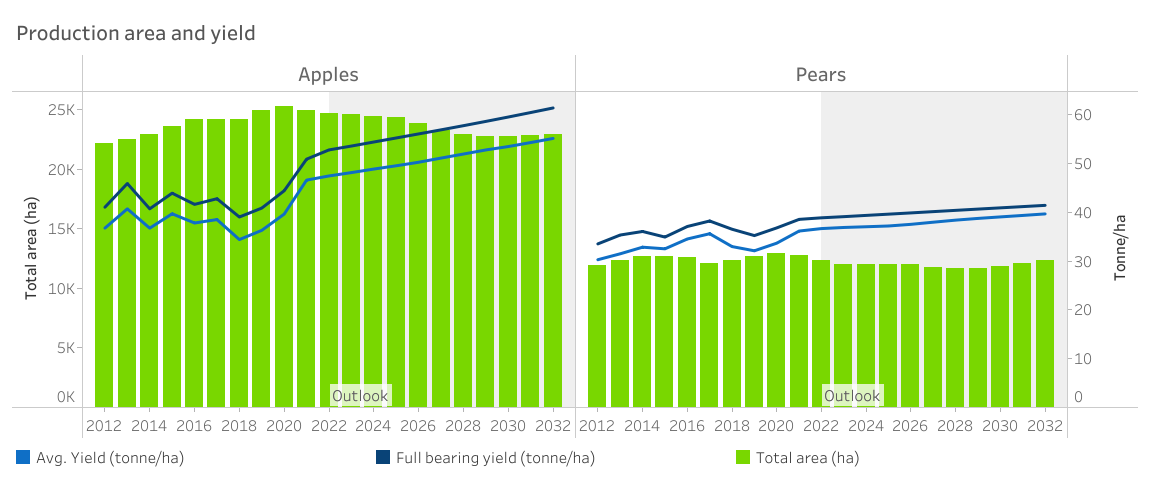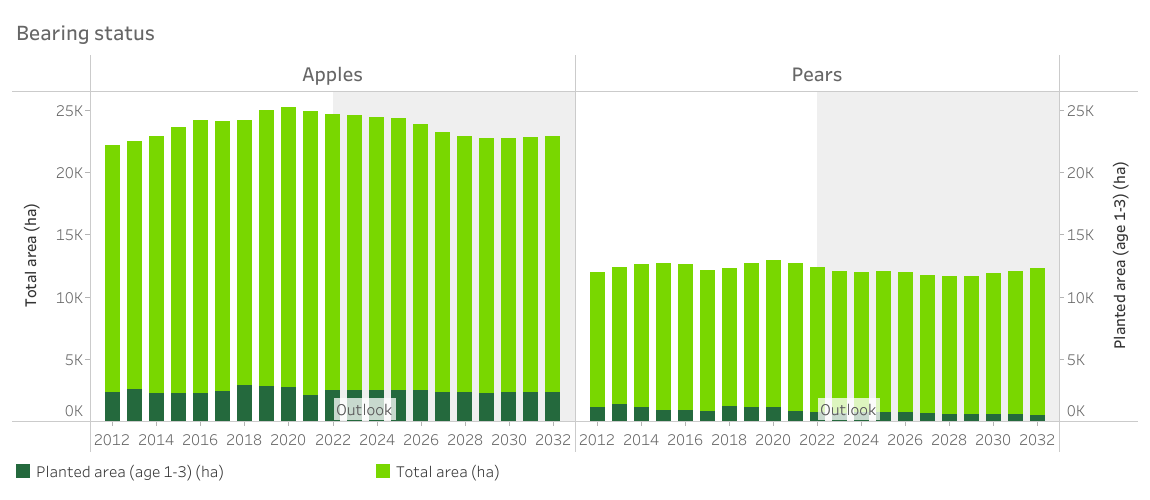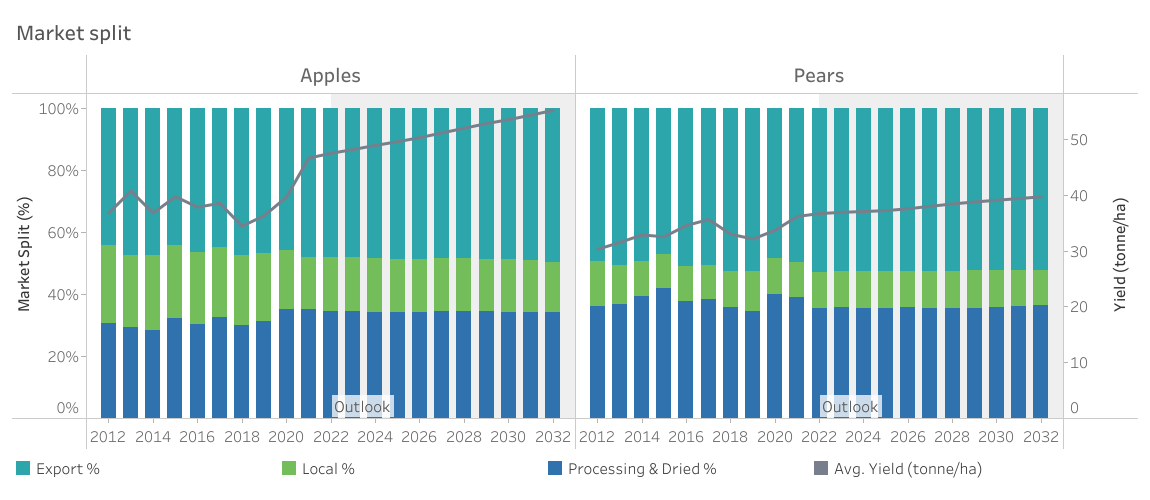Pome Fruit Key Summary Statistics
Summary Statistics

Pome production area and yield

Whilst apple area peaked at just over 25 000 hectares in 2020, the projection over the outlook is a gradual decrease in area to around 23 000 hectares by 2031. Similarly, pear area peaked in 2020 at close to 13 000 hectares, with some consolidation expected over the outlook period. These projections are driven by the changing management practices, with higher yields per hectare expected, aided by the removal of marginal orchards and the reallocation of marginal land to the cultivation of other crops.
Bearing status

Despite the decline in total area projected, it is expected that a fairly consistent approach to replacement of aging and/or unproductive orchards will remain in place. With changes in marketing opportunities, cultivar development and the managing of labour use, and utilisation of packing and cold storage facilities at capacity throughout the season, reinvestment is projected to remain a priority in the industry.
Market split

After recovering from the drought affecting water availability and yields in the latter parts of the previous decade, the industry is adapting to a new normal in terms of yields. Record harvests are logged, with a smaller incremental growth rate projected over the outlook period than what has been observed in the last two seasons. Whilst working towards better pack outs, the processing marketing channel remains an important outlet for pome fruit not meeting fresh packing specifications. With a fairly flat outlook for domestic sales, the expectation is that the impact of higher volumes over time would be absorbed in the processing market when not suitable for exports.
Nominal and real prices

The volatile marketing environment of the past couple of seasons saw apple and pear prices fluctuate. Pandemic related market closures, global logistics disruptions, the invasion of Ukraine by Russia, fluctuating exchange rates and other factors contributed to these prices observations. Going forward, the gradual weakening of the rand is expected to aid price growth, with the expansion of marketing opportunities also alleviating the pressure on and concentration in existing markets. In real terms, thus prices adjusted for inflation, the outlook is fairly flat and below the levels observed between 2012 and 2021. Consequently, given the cost squeeze already felt throughout the industry, increasing the output per hectare is one option to counter a gradual decline in net returns. Quality remains a critical factor in these considerations to ensure that the additional volumes produced improves the revenue generated per hectare.